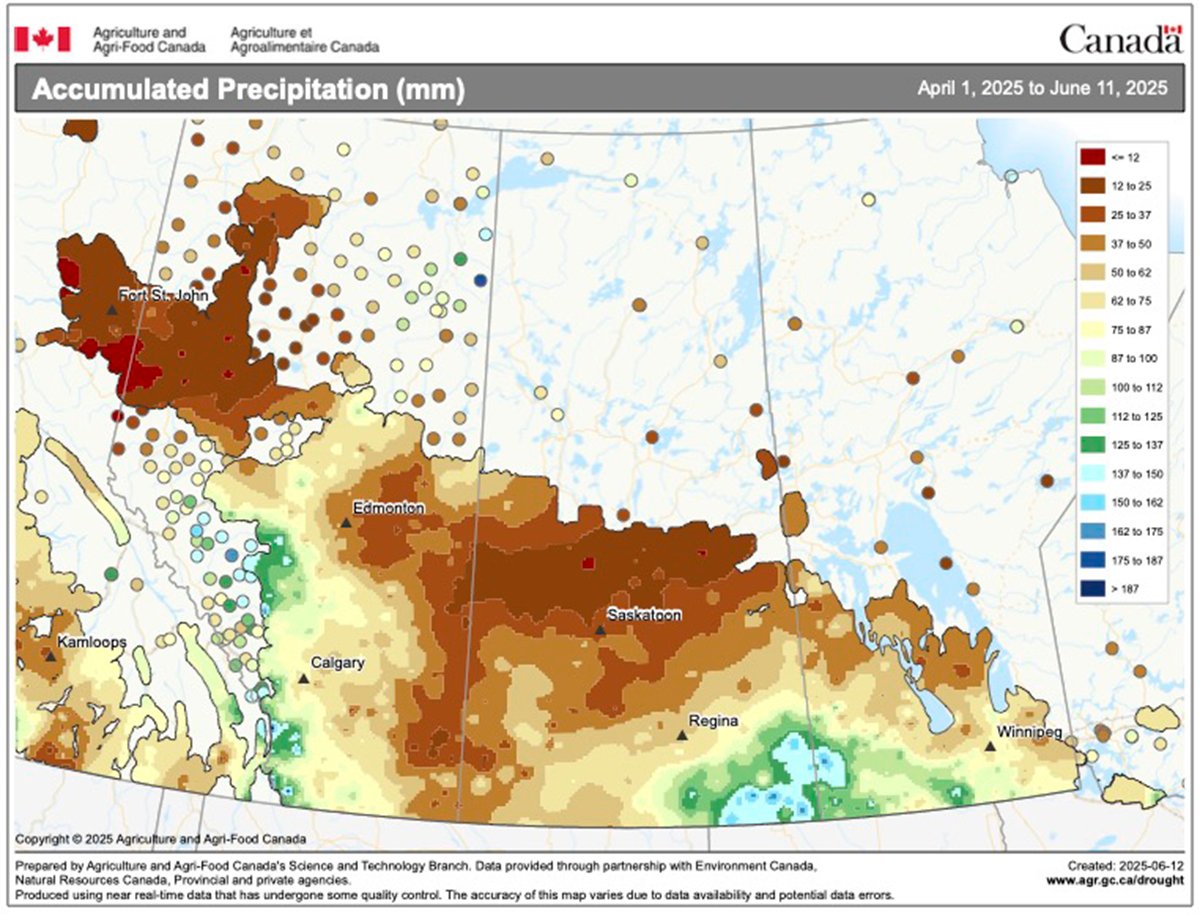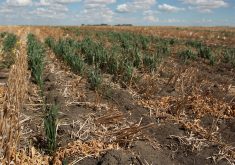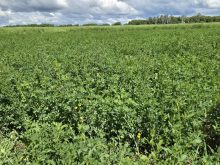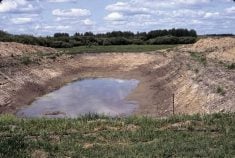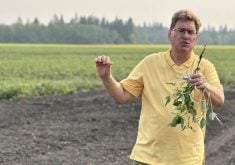UPDATED – June 16, 2025 – 1155 CST – WINNIPEG — Rain has been a rare sight on Christine Strube’s farm near Shellbrook, Sask., this spring
From the start of the growing season to the middle of June, Strube recorded almost no rainfall on her farm.
“Maybe two-tenths (of an inch) over the course of a long period of time. I could count the drops … every time there was a little bit of rain,” said Strube, who runs a cattle and grain operation with her husband, Glenn.
Read Also
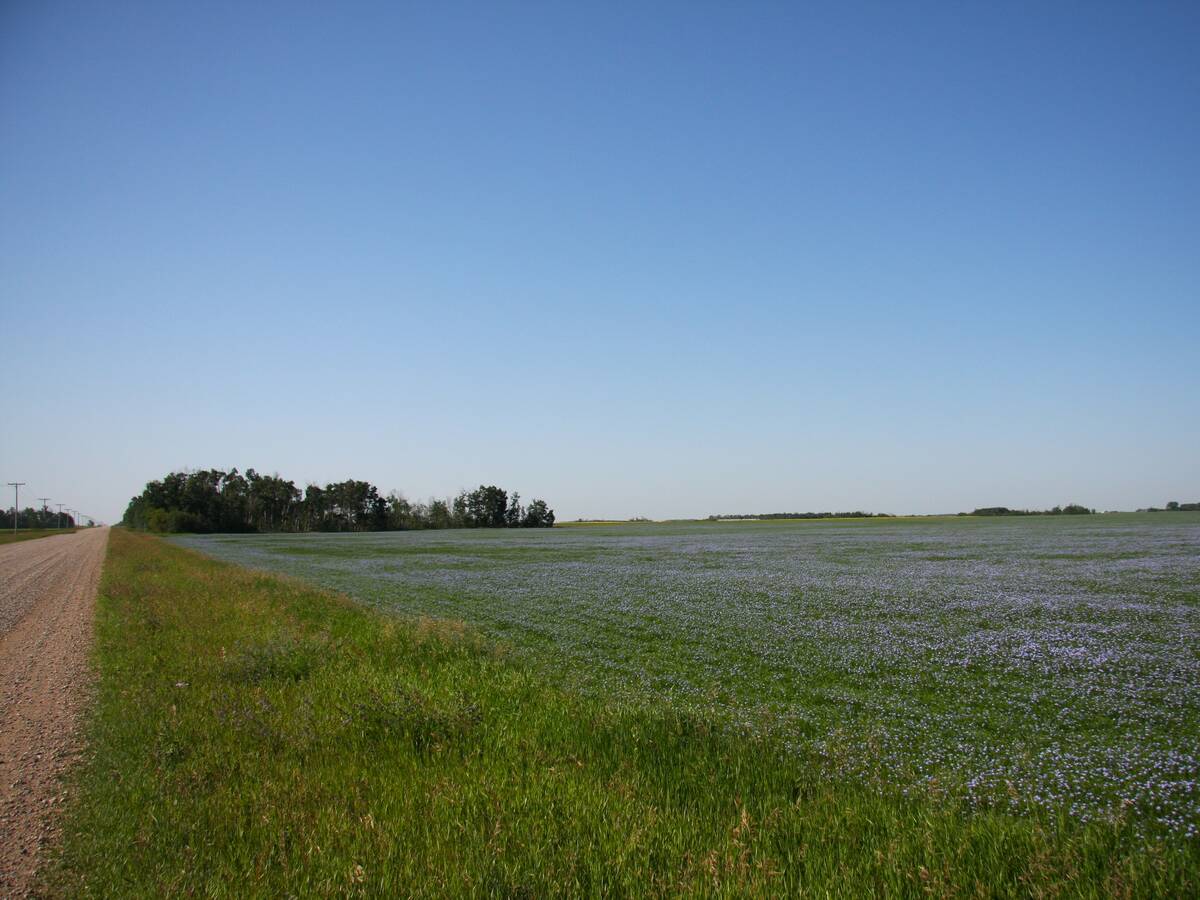
Farmland advisory committee created in Saskatchewan
The Saskatchewan government has created the Farm Land Ownership Advisory Committee to address farmer concerns and gain feedback about the issues.
Over the Father’s Day weekend, producers around Shellbrook finally received some rain. Eighteen to 20 millimetres fell on Strube’s land.
The moisture will help crops in the region around Shellbrook and allow pastures to recover, but Strube is concerned about the alfalfa. The rainfall arrived too late for many hayfields in the area. On some farms, there may be insufficient growth to warrant a first cut of alfalfa, which normally happens at the end of June or early July.
“What I’m hearing right now is that producers are worried about how this (the drought) is going to affect their hay crops,” Strube said.
“It’s hard for producers to decide if they’re going to put their cattle out (on the hayfields) to graze it off.”
A shortfall of rain this spring has dominated the conversations in Saskatchewan’s northern grain belt, which stretches from Hudson Bay to North Battleford and farther west.
Andrew Ireson, a professor in the University of Saskatchewan’s school of environment and sustainability, keeps track of soil moisture levels at a site 40 kilometres east of Saskatoon near St. Denis.
The surface soil moisture (the top 25 centimetres of soil) at the site was unusually dry in the second week of June.
“Observations from a grassland … (show) shallow soil moisture right now hasn’t been this low in the past 11 years of measurement,” said Ireson, who is part of the Global Institute for Water Security at the U of S.
David Altrogge hasn’t studied the soil moisture data from St. Denis, but he has spent many hours in May and Junestudying the weather outlook.
“That seems like all I do … look at the weather forecast, the weather website,” said Altrogge, who runs a grain farm near St. Benedict, north of Humboldt.
As of June 16, Altrogge said only 12.5 mm of rain had fallen on his farm since the start of the growing season. He recorded zero rainfall at his farmyard over the Father’s Day weekend.
The lack of moisture around St. Benedict’s is a massive change from 2024. Last year, Altrogge said he received more than 200 mm of rainfall in May and June.
Consequently, the crops on his farm are suffering.
Altrogge described his wheat crop as looking “tired” and his canola fields are patchy.
“Our canola germination was really poor … probably about 60 per cent germination or lower. We had a lot of patches that didn’t come up.”
Other farmers in north-central Saskatchewan were more fortunate. Prince Albert and areas north of St. Benedict received a decent shot of rain June 14-15.
About 250 km west of St. Benedict, in North Battleford, the story is similar. Spotty rains delivered 15-20 mm of rain to some farms over the weekend, but other producers were less fortunate.
“Anywhere south of town (North Battleford) … they got nothing,” said Quinton Cubbon, a crop extension specialist in North Battleford with Saskatchewan’s agriculture ministry.
The small amount of rain, mostly north of the city, did help crops that were suffering through the spring drought.
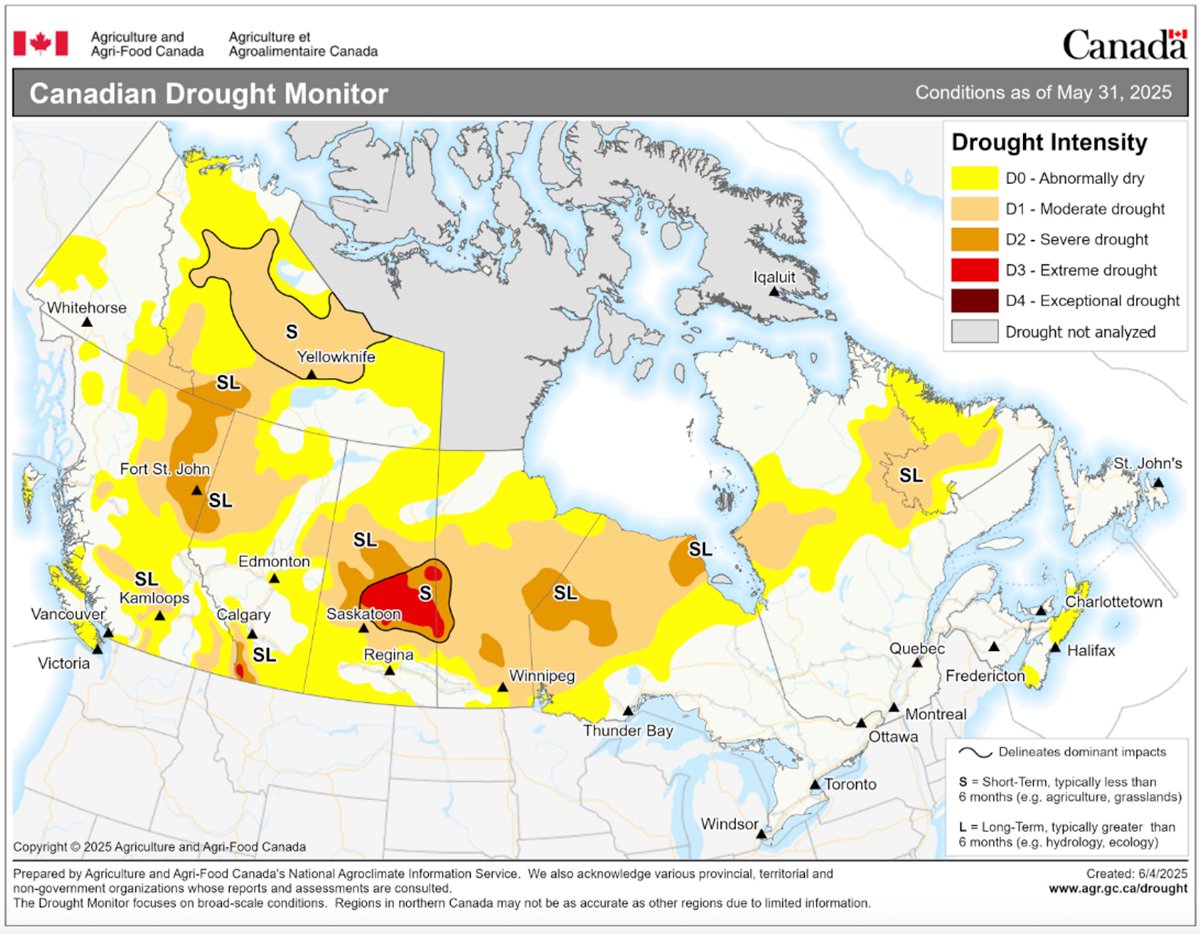
“I was driving into town last night (June 15) and the crops look 10 times better than they did before the rains,” Cubbon said.
“I really noticed it in the lentils…. There was a lot of lentils around here that looked like they were struggling in the drought.”
Soil moisture levels in parts of Saskatchewan remain short or very short, but the weather forecast for the week of June 16-22 could turn that around.
Showers, rain and cooler temperatures are expected across much of the province.
Altrogge remains hopeful that his canola, wheat and other crops will recover from the extremely dry spring — if it rains.
“If we get an inch in the next seven days, we’ll be OK,” he said June 16.
“I don’t think the yield has set itself yet.”


